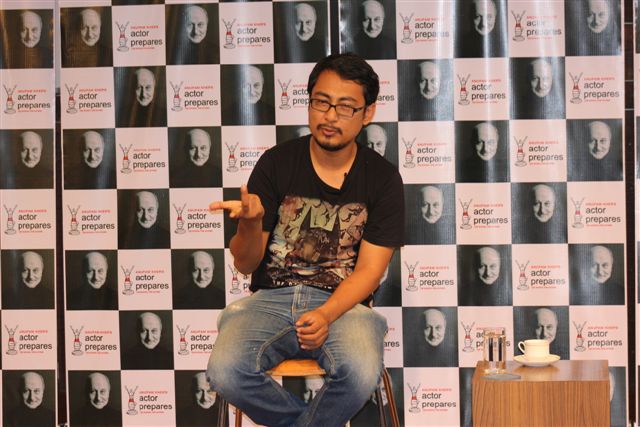I have the pleasure of trying the part of Netaji Subhash Chandra Bose in two movies – Raag Desh, coordinated by Tigmanshu Dhulia, and Kammara Sambhavam, coordinated by Rathish Ambat. One prompted the other, really. Mrudula Murali, who plays Lakhsmi Swaminathan in Raag Desh, is from Kerala. I am speculating the group of Kammara Sambhavam asked her who was playing Netaji in her film, and she called me to inquire as to whether it would be okay to pass on my number. I stated, ‘Beyond any doubt, I have for the longest time been itching to break into South Indian movies’.
The Malayalam Film Industry and Its Many Charms
The heading group at that point rang me and requested photographs. I sent them, those were finished, and inside two weeks I was on a flight to Chennai. By then, I just realized that the saint was Siddharth (of Rang De Basanti distinction). I didn’t know who the chief was, what the story was, who else was acting, nothing. All I thought about was that they were putting forth a not too bad measure of cash and had just exchanged a progress to my ledger. (Truth be told, when I achieved my inn room in Chennai – I all of a sudden stressed over how they expected to depict Netaji).
The night I landed, I was taken to the Memorial Hall, where they were shooting a scene including Mahatma Gandhi; my hair was shaved off and I attempted on the outfits for the executive to finish. My scenes would begin the following day. In the lodging, I completely learnt my lines (which were in Hindi and English) since I had a discourse scene the following day and one thing I am somewhat headstrong about as an on-screen character is that I won’t be the one to overlook my lines and cause a retake. In every one of my movies, I have flubbed my lines at most twice or thrice. All things considered, an expert performing artist ought to recollect his lines in any event.
Furthermore, was I happy I rehearsed to such an extent. I figure I more likely than not done the scene a sum of 30-35 times, from various points and with various focal points. I fouled up my lines just once, fortunately. I think the overwhelming lunch preceding my shot was the offender! Day 2 and day 3 were at the gigantic compound of Binny Mills, where a Japanese base had been reproduced with amazing measures of detail. I am certain the Art Director will win various honors one year from now.
I had heard various records of the polished skill of the film business down South, lastly encountering it was magnificent. The group was exceptionally expert and minding. There were around a large portion of the quantity of team individuals one sees on a customary Bollywood generation, yet the measure of work they were completing was no less. I was a little stressed over nourishment on the main day – curd rice and sambhar isn’t a decent combo for me – yet from day two onwards I discovered a few dishes that I loved. Furthermore, the day three lunch indicated something extraordinary around 99% proficient Kerala – Hindus, Muslims, Christians all delighted in the remarkably delicious Kerala style meat broil.
Making Cinema Viable: Lessons from Down South
I had some exceptionally enlightening discussions with the generation controller Shafeer Sait, the cosmetics and prosthetics wizard Roshan N G, and chief Rathish Ambat, who as I would like to think is a solid contender for one year from now’s National Award for the Best Debut. I learnt many things about the Malayalam and Tamil ventures which may be worth imitating in Assam also.
For example, ticket costs are topped at most extreme 120 rupees. Along these lines, not exclusively are theaters reliably 70-80% full, it likewise permits ordinary white collar class individuals to watch motion pictures every now and again rather than just a single or two a month. As I compose this, Tubelight tickets in Mumbai are valued at a crazy Rs 380 to Rs 570 or significantly more. Just the rich can bear to purchase tickets for their entire family at these rates. The Assam government is giving awards for remodeling and reviving theaters. We should take after the case of the southern states and concentrate on opening numerous, numerous miniplexes and on keeping ticket costs moderate for the normal individual. It’s truly miserable that Tezpur, the social capital of the State, which used to have four film corridors has just a single now, and that too not doing so great.
Till a couple of years back, Malayalam films weren’t fit as a fiddle either, however with the development of new miniplexes and the appearance of fantastic movies, the industry has truly progressed. Kerala’s populace is around 3.4 crores, Assam’s is 3 crores, yet a normal Malayalam film spending plan is around 5-10 crores now, which is incomprehensible for Assam. One of the primary issues we confront is the absence of theaters, and level out of every one of those, there are scarcely 15 or so theaters from where nice film industry returns come. A great many people don’t understand that on the off chance that they pay 100 rupees for a ticket, at that point 50-55% goes to assess, to the silver screen lobby, and the wholesaler, leaving around 45% for the maker. So if a film acquires 22 lakh in the cinema world, at that point around 10 lakh goes to the maker, which is the situation for Local Kung Fu 2. Our financial plan was roughly 28-30 lakh, out of which 9 originated from crowdfunding, 7 from supports and 1.5 from a speculator. We spent around 9-10 from our own pockets, yet since we had a few pending installments to influence, we’re to at present at around a half individual misfortune.
Complexity this to Malayalam silver screen’s greatest hit so far – Pullimurugan – a normal film, from what I have heard. Be that as it may, made on a financial plan of 25 crore, it earned 152 crores around the world! Update: Kerala and Assam have generally a similar populace.
What’s the Solution?
The way I see it up until this point, three things should be done to enhance the Assamese film industry. More miniplexes (like Gold Cinema) should be manufactured. On the off chance that we have extra 25-30 corridors of not too bad quality, a 30 lakh film will can possibly recuperate its financial plan inside seven days. Also, on the off chance that they are worked with government awards, at that point perhaps there ought to be a top on ticket costs so everyday citizens are not discouraged from frequently going to theaters. We additionally require no less than one great Assamese film to discharge at regular intervals. The accumulations of Doordarshan, Kothanodi, Bahnimaan, Gaane Ki Aane and LKF 2 demonstrate that general society is in fact eager to go for films they believe are justified, despite all the trouble which is the reason I am giving all my help to Dooronir Nirola Poja, another magnificent film that should be seen by people in general.
Individuals say our movies aren’t sufficiently announced. Be that as it may, they don’t understand exactly how costly exposure is. Simply printing one flag/accumulating can cost upto Rs 4000 and after that leasing it can cost upto Rs 15,000 every week or thereabouts. In the event that we need 20 hoardings, the cost of those by themselves can be Rs 2-4 lakh. What’s more, at that point there’s the genuine cost of discharge through UFO/Scrabble/Qube – generally Rs 4-5 lakhs for 40 screens. At the point when the aggregate spending plan of a film is Rs 30-40 lakhs, these are as of now colossal lumps. I feel individuals ought to likewise step up and remain somewhat mindful of which Assamese movies are discharging. At any rate, we can watch the trailer, and choose whether it merits burning through cash on or not.
I’d jump at the chance to end this by saying the best piece of my Malayalam encounter. My adjust charges were exchanged to my record on the most recent day of shooting, without me notwithstanding asking anybody. An enormous distinction from calling up bookkeepers sometimes and asking, ‘Installment aa gaya kya?’.























